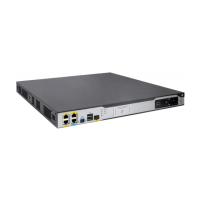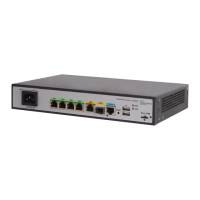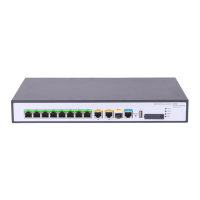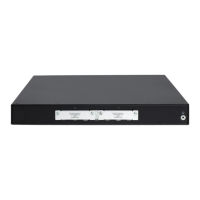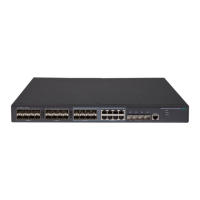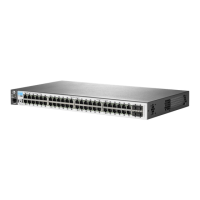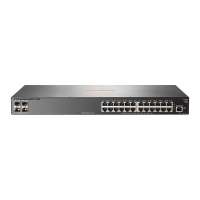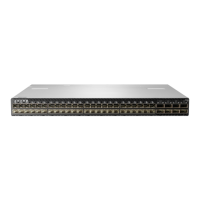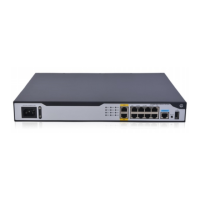329
4. Compares the variable sample with the start threshold at sampling intervals until the start
threshold is crossed.
5. Executes the policy again.
This process cycles for the monitor policy to be executed and re-executed.
Examples
# Configure a CLI-defined policy to get the value of the MIB variable 1.3.6.4.9.9.42.1.2.1.6.4 every
five seconds. Set the start threshold to 1 and the restart threshold to 2. Enable EAA to execute the
policy when the value changes to 1 for the first time. Enable EAA to re-execute the policy if the value
changes to 1 each time after the value has changed to 2.
<Sysname> system-view
[Sysname] rtm cli-policy test
[Sysname-rtm-test] event snmp oid 1.3.6.4.9.9.42.1.2.1.6.4 monitor-obj get start-op eq
start-val 1 restart-op eq restart-val 2 interval 5
event snmp-notification
Use event snmp-notification to configure an SNMP-Notification event for a CLI-defined policy.
Use undo event to remove the event in a CLI-defined policy.
Syntax
event snmp-notification oid oid oid-val oid-val op op [ drop ]
undo event
Default
No SNMP-Notification event is configured.
Views
CLI-defined policy view
Predefined user roles
network-admin
Parameters
oid oid: Specifies the OID of the monitored MIB variable, a string of 1 to 256 characters.
oid-val oid-val: Specifies the threshold to be compared with the sampled value. The oid-val
argument can be any data type supported by SNMP, including numerals and character strings. The
CLI online help system displays the value range as character strings of 1 to 512 characters. If the
threshold value contains spaces, you must enclose the value in quotation marks (" ").
op op: Specifies the operator for comparing the sampled value with the threshold. The policy is
executed if the comparison result meets the condition. For keywords available for the start-op
argument, see Tab le 6 3.
drop: Dro
ps the notification if the comparison result meets the condition. If this keyword is not
specified, the system sends the notification.
